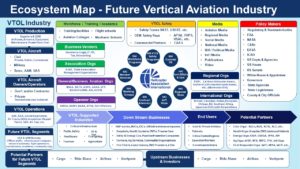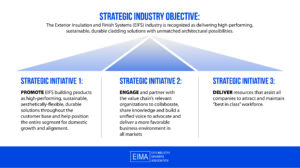Despite political dysfunction, pressure is increasing for Trade Associations to notch policy wins. Industry Executives are feeling the pinch of higher regulatory costs, and they want their Trade Associations to deliver results regardless of dysfunction. Whether it be in State Capitols or in Washington, DC the challenges are the same. While Trade Associations effectively utilize coalitions to build a bigger base of support there are other options to put on the table. In several instances, Trade Associations are utilizing ecosystems consisting of Industry Supply Chains and Value Chains to far extend their reach. In doing so, they are better positioned to notch more wins over the long term.
For decades, issue coalitions have proven themselves as a viable resource for organizations. Small, Medium, and large Trade Associations continue to benefit from participation in issue coalitions. With coalitions, CEOs should also add the ecosystem approach to their policy and advocacy efforts.
In many cases the ecosystem approach comes together through Trade Association Strategic Planning deliberations with Board Members and Industry Leaders. For example, costly new legislative or regulatory proposals that apply to every part of a supply chain usually triggers discussions around who else needs to be brought to the table in order to make sure an Industry has the support it needs to be successful. Ecosystems are designed to represent their Industries in such a way that all Trade Association members and everyone within their respective spheres of influence benefit and prosper. And like all ecosystems, each constituent is integral to the whole and all are interdependent.
Ecosystems can be developed in every Industry. For example, the Helicopter Industry is navigating its way through disruption and its future will likely be defined around Vertical Aviation. With that in mind the HIA Board of Directors determined its best way forward is around joining with other Industry Segments and Trade Associations to help Companies in their value chain reach their destination successfully. For example, HAI (Helicopter Association International) is working to unify the Industry around a new vision of vertical aviation and continually promotes community compatibility. In doing so they identified the Strategic Partnerships they need to establish in order to achieve a consensus vision. Their ecosystem is robust and geared towards shaping a more favorable environment for all companies within the value chain.

Another example is in the Exterior Insulation and Finish Systems Industry (EIFS). The Industry is represented by EIMA, and the Board deemed it necessary to far extend its reach in order to be successful. In 2022, and it included new and broadened strategic initiatives for promotion and advocacy, a new governance structure that aligns the new committees to each initiative, and new opportunities for enhanced participation for both EIMA’s members and allies that help develop a robust ecosystem. This effort helped the EIFS Industry win a significant victory before the Minneapolis, Minnesota City Council.

Ecosystems don’t replace your current issue coalition efforts, instead they add greater strength and impact to your organizations advocacy and policy strategies. This approach provides the range and the reach to innovate, become more efficient as an Industry and Trade Association, and make effective cases to regulators and legislators, as necessary. In moving forward, your industry can become more fluid and flexible in its approaches and still be able to have the broadest impact in shaping the external environment. In a time of political dysfunction and global uncertainty this is an approach worth trying.
For more information on how Potomac Core can help your Trade Association build and implement your Trade Association’s ecosystem, please contact Dan Varroney dan@potomaccore.com or team@potomaccore.com.





